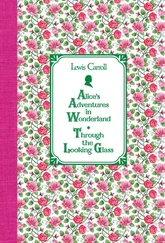Bage, R. 1784. Barham Downs. Rpt. New York: Garland, 1979.
Bancroft, W. D. 1924. The recognition of blue. Journal of Physical Chemistry 28:131-44.
Bastian, A. 1869. Miscellen. Zeitschrift für Ethnologie und ihre Hülfswissenschaften als Lehre vom Menschen in seinen Beziehungen zur Natur und zur Geschichte 1:89-90.
Beattie, J. 1788. The theory of language . Edinburgh: A. Strahan.
Bebbington, D. W. 2004. The mind of Gladstone: Religion, Homer, and politics . Oxford: Oxford University Press.
Berlin, B., and P. Kay. 1969. Basic color terms: Their universality and evolution . Berkeley: University of California Press.
Besterman, T., ed. 1987. The complete works of Voltaire . Vol. 33. Geneva: Institut et Musée Voltaire.
Blackie, J. S. 1866. Homer and the “Iliad .” Vol. 4. Edinburgh: Edmonston and Douglas.
Bloomfield, L. 1933. Language . London: George Allen and Unwin.
Boas, F. 1910. Psychological problems in anthropology. Lecture delivered at the celebration of the twentieth anniversary of the opening of Clark University, September 1909. American Journal of Psychology 21 (3):371-84.
– -. 1920. The methods of ethnology. American Anthropologist , new series 22 (4):311-21.
– -. 1938. Language. In General Anthropology, ed. F. Boas, 124-45. Boston: D. C. Heath.
Boman, T. 1960. Hebrew thought compared with Greek . London: SCM Press.
Boroditsky, L., L. Schmidt, and W. Phillips. 2003. Sex, syntax, and semantics. In Language in mind: Advances in the study of language and thought , ed. D. Gentner and S. Goldin-Meadow, 61-78. London: MIT Press.
Boroditsky, L., and L. Schmidt. Sex, syntax, and semantics. Unpublished ms.
Breva-Claramonte, M. 2001. Data collection and data analysis in Lorenzo Hervás: Laying the ground for modern linguistic typology. In Historia de la lingüística en España , ed. E. F. K. Koerner and Hans-Josef Niederehe, 265-80. Amsterdam: John Benjamins.
Broca, P. P. 1861. Perte de la parole, ramollissement chronique et destruction partielle du lobe antérieur gauche du cerveau. Bulletins de la Société d’Anthropologie de Paris (Séance du 18 avril 1861) 2:235-38.
Brown, C. H. 2005. Finger and hand. In Haspelmath et al. 2005.
Brown, P., and S. C. Levinson. 1993. “Uphill” and “downhill” in Tzeltal. Journal of Linguistic Anthropology 3:46-74.
– -. 2000. Frames of spatial reference and their acquisition in Tenejapan Tzeltal. In Culture thought and development , ed. L. Nucci, G. Saxe, and E. Turiel, 167-97. London: Laurence Erlbaum Associates.
Brunetière, F. 1895. Discours de réception a l’Académie française, 15.2.1894. In Nouveaux essais sur la littérature contemporaine . Paris: C. Lévy.
Brunschwig, H. 1561. The most excellent and perfecte homish apothecarye or homely physick booke for all the grefes and diseases of the bodye . Translated out the Almaine Speche into English by John Hollybush . Collen: Arnold Birckman.
Cablitz, G. H. 2002. The acquisition of an absolute system: Learning to talk about space in Marquesan (Oceanic, French Polynesia). In Proceedings of the 31st Stanford Child Language Research Forum: Space in language , location , motion , path , and manner , 40-49. Stanford: Center for the Study of Language and Information.
Carlson, R. 1994. A grammar of Supyire. Berlin: Mouton de Gruyter.
Casson, R. W. 1997. Color shift: Evolution of English color terms from brightness to hue. In Color categories in thought and language, ed. C. L. Hardin and L. Maffi, 224-40. Cambridge: Cambridge University Press.
Charpentier, F. 1683. De l’excellence de la langue françoise. Paris: Veuve Bilaine.
Chase, S. 1958. Some things worth knowing: A generalist’s guide to useful knowledge . New York: Harper.
Christol, A. 2002. Les couleurs de la mer. In Couleurs et vision dans l’antiquité classique , ed. L. Villard, 29-44. Mont-Saint-Aignan: Publications de l’Université de Rouen.
Claudi, U. 1985. Zur Entstehung von Genussystemen. Hamburg: Helmut Buske.
Clifford, W. K. 1879. Seeing and thinking . London: Macmillan.
Colli, G., M. Montinari, M. L. Haase, and W. Müller-Lauter. 2001. Nietzsche, Werke: Kritische Gesamtausgabe. Vol. 9.3. Berlin: de Gruyter.
Condillac, E. B. de. 1822 [1746]. Essai sur l’origine des connoissances humaine: Ouvrage où l’on réduit à un seul principe tout ce qui concerne l’entendement humain. New ed. Paris: Imprimerie d’Auguste Delalain.
Conklin. H. C. 1955. Hanunóo color categories. Southwestern Journal of Anthropology 11:339-44.
Conlan, F. 2005. Searching for the semantic boundaries of the Japanese colour term “AO.” PhD dissertation, Faculty of Community Services, Education, and Social Sciences, Edith Cowan University, Western Australia.
Corbett, G. 2000. Number . Cambridge: Cambridge University Press.
– -. 2005. Number of genders. In Haspelmath et al. 2005.
Corbett, G., and G. Morgan. 1988. Colour terms in Russian: Reflections of typological constraints in a single language. Journal of Linguistics 24:31-64.
Crawfurd, J. 1850. On the words introduced into the English from the Malay, Polynesian, and Chinese languages. Journal of the Indian Archipelago and Eastern Asia 4:182-90.
Crystal, D. 1995. The Cambridge encyclopedia of the English language . Cambridge: Cambridge University Press.
Curzon, A. 2003. Gender shifts in the history of English. Cambridge: Cambridge University Press.
Darnell, Regna. 1990. Edward Sapir: Linguist, anthropologist , humanist . Berkeley: University of California Press.
Darwin, C. R. 1881. Inheritance. Nature: A Weekly Illustrated Journal of Science 24 (July 21).
Darwin, C. R., and A. R. Wallace. 1858. On the tendency of species to form varieties; and on the perpetuation of varieties and species by natural means of selection. Journal of the Proceedings of the Linnean Society of London, Zoology 3:61.
De Beer, G. 1958. Further unpublished letters of Charles Darwin. Annals of Science 14 (2):88-89.
De León, L. 1994. Exploration in the acquisition of geocentric location by Tzotzil children. Linguistics 32 (4-5):857-84.
Delitzsch, Franz. 1878. Der Talmud und die Farben. Nord und Süd 5:254-67.
– -. 1898. Farben in der Bibel. In Realencyklopädie für protestantische Theologie und Kirche, ed. Albert Hauck. 3rd ed. Vol. 5. Leipzig: J. C. Hinrichs.
Dench, A. 1991. Panyjima. In Handbook of Australian. Languages, vol. 4, ed. R. M. W. Dixon and B. J. Blake, 125-243. Oxford: Oxford University Press.
Deutscher, G. 2000. Syntactic change in Akkadian: The evolution of sentential complementation . Oxford: Oxford University Press.
– -. 2005. The Unfolding of Language. New York: Metropolitan.
– -. 2009. Overall complexity-A wild goose chase? In Sampson et al. 2009, 243-51.
Dixon, R. M. W. 1989. Searching for aboriginal languages: Memoirs of a field worker . Chicago: University of Chicago Press.
– -. 1997. The rise and fall of languages. Cambridge: Cambridge University Press.
– -. 2006. Complementation strategies in Dyirbal. In Dixon and Aikhenvald 2006, 263-80.
Dixon, R. M. W., and A. Y. Aikhenvald, eds. 2006. Complementation: A cross-linguistic typology . Oxford: Oxford University Press.
Dixon, R. M. W., W. S. Ramson, and M. Thomas. 1990. Australian aboriginal words in English: Their origin and meaning . Oxford: Oxford University Press.
Читать дальше











